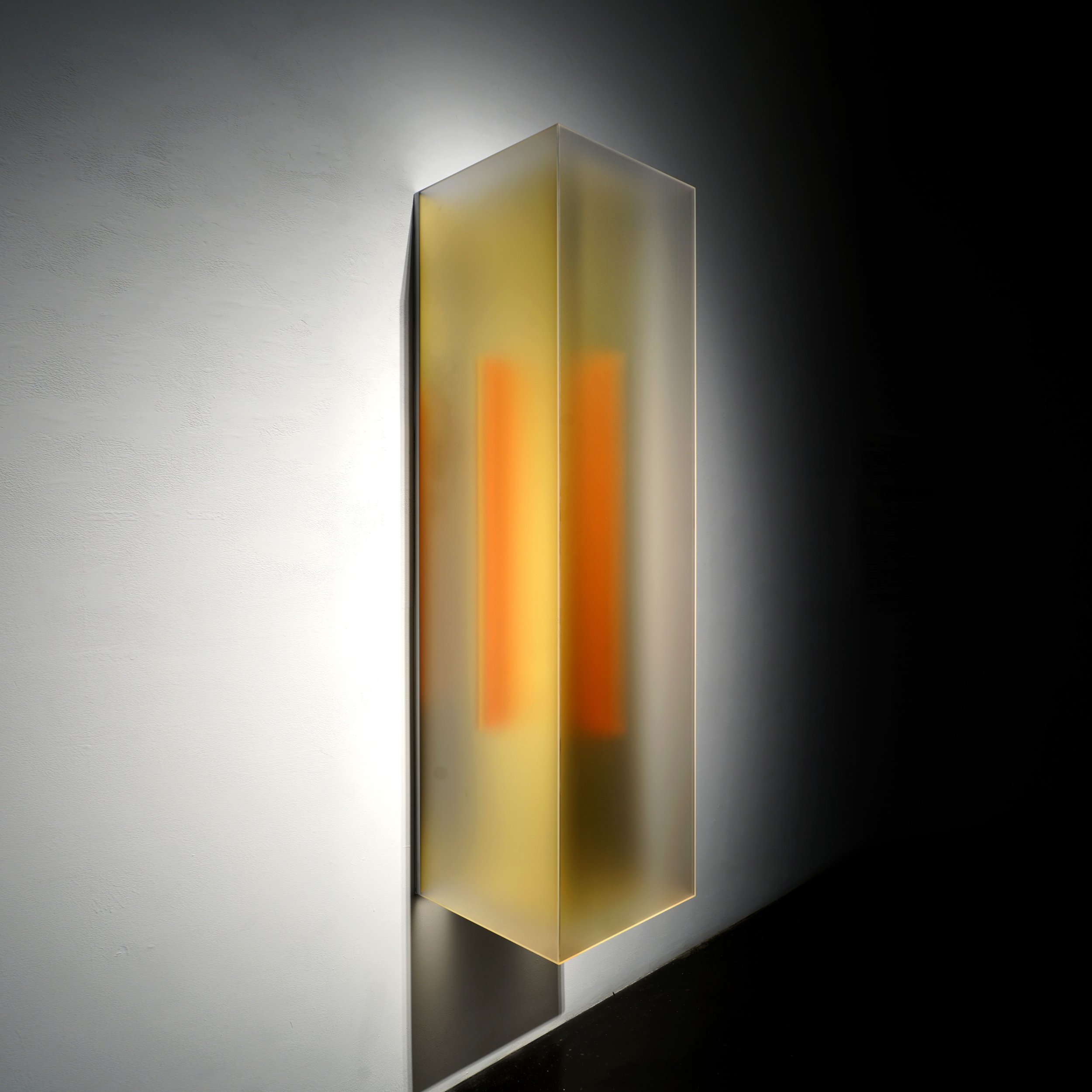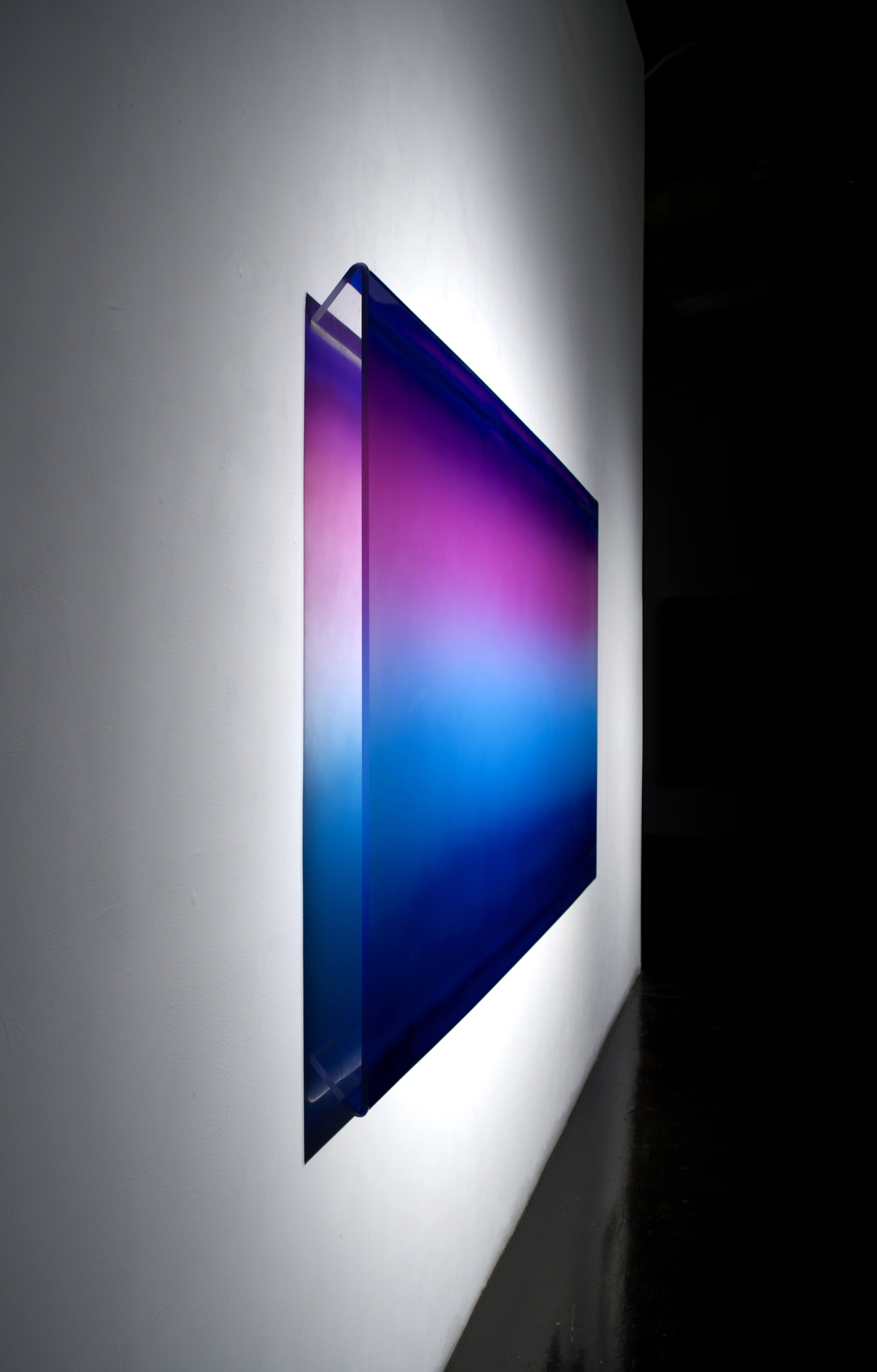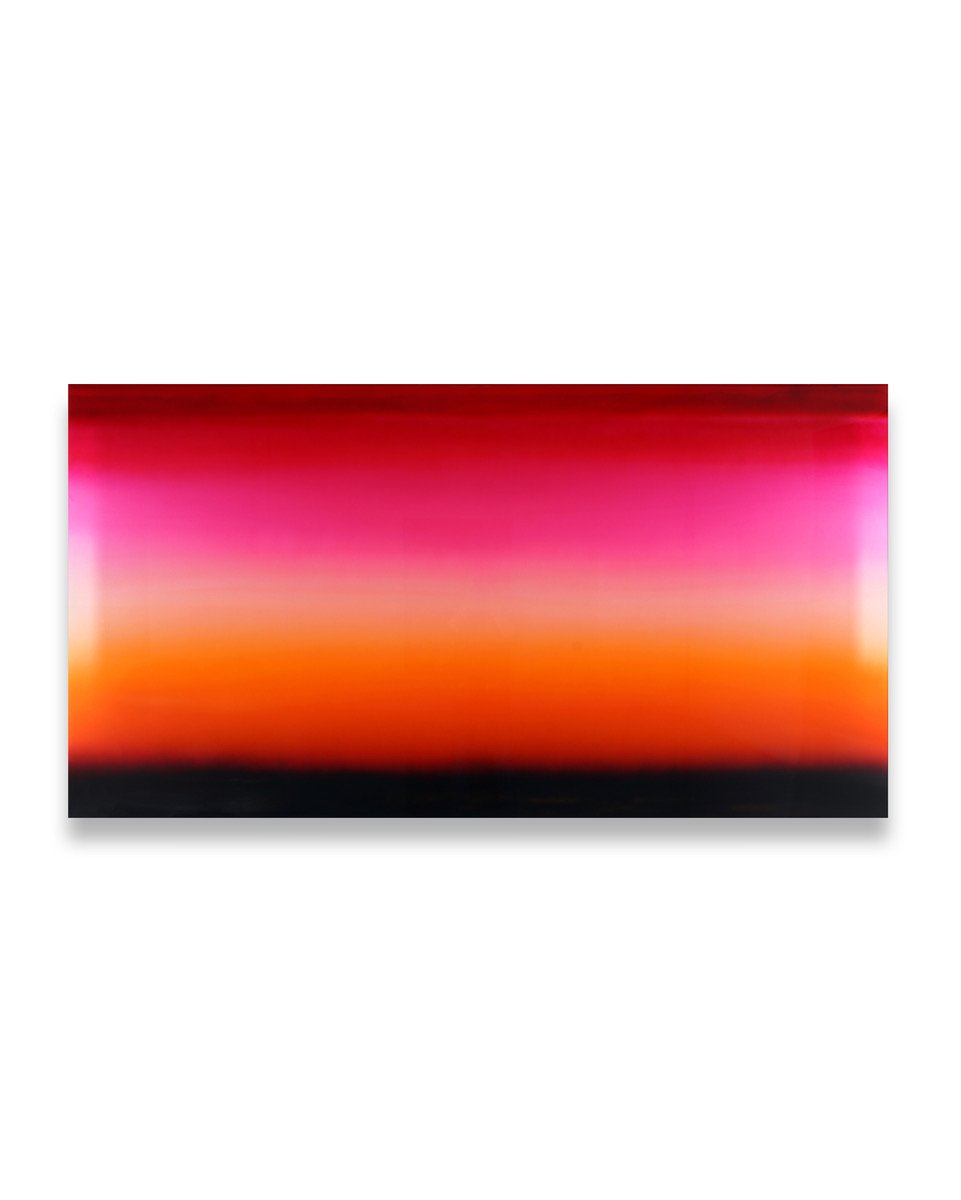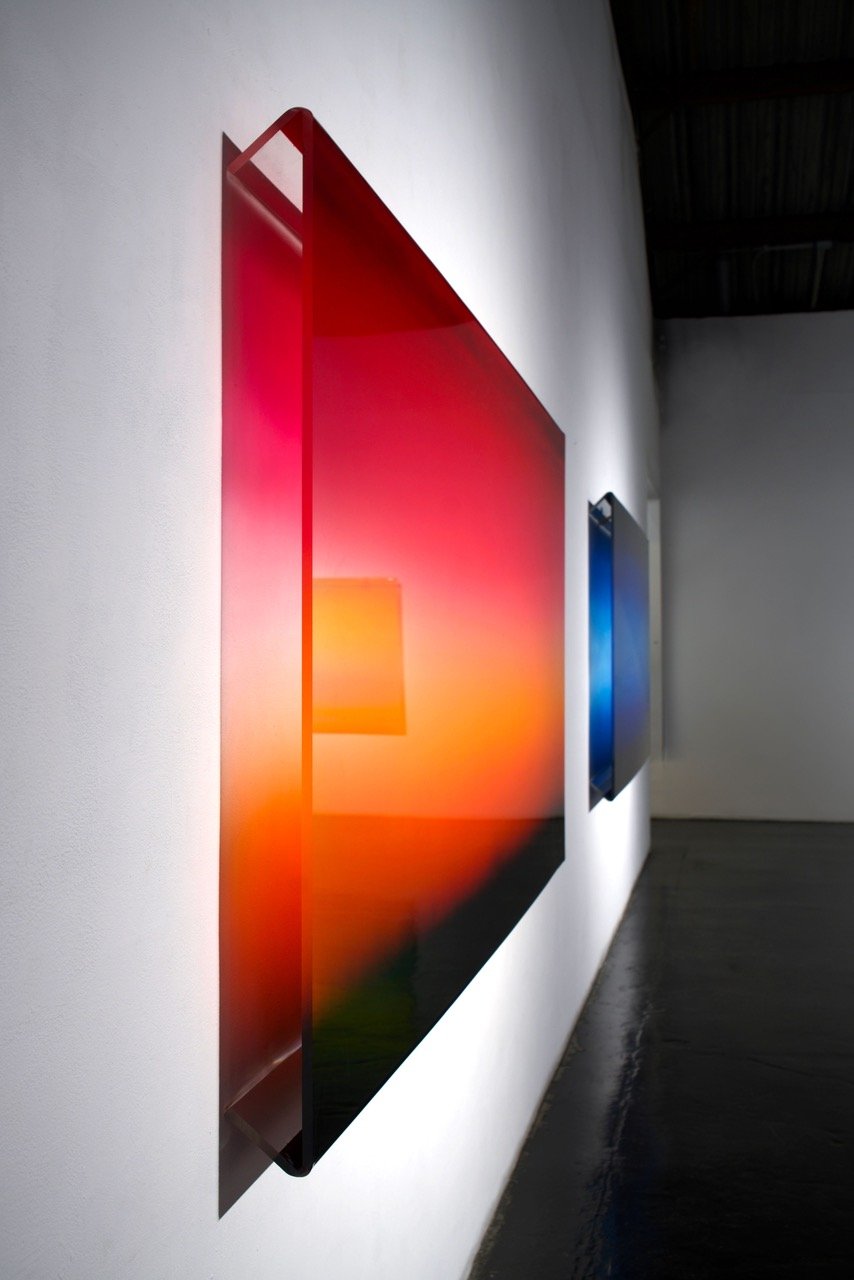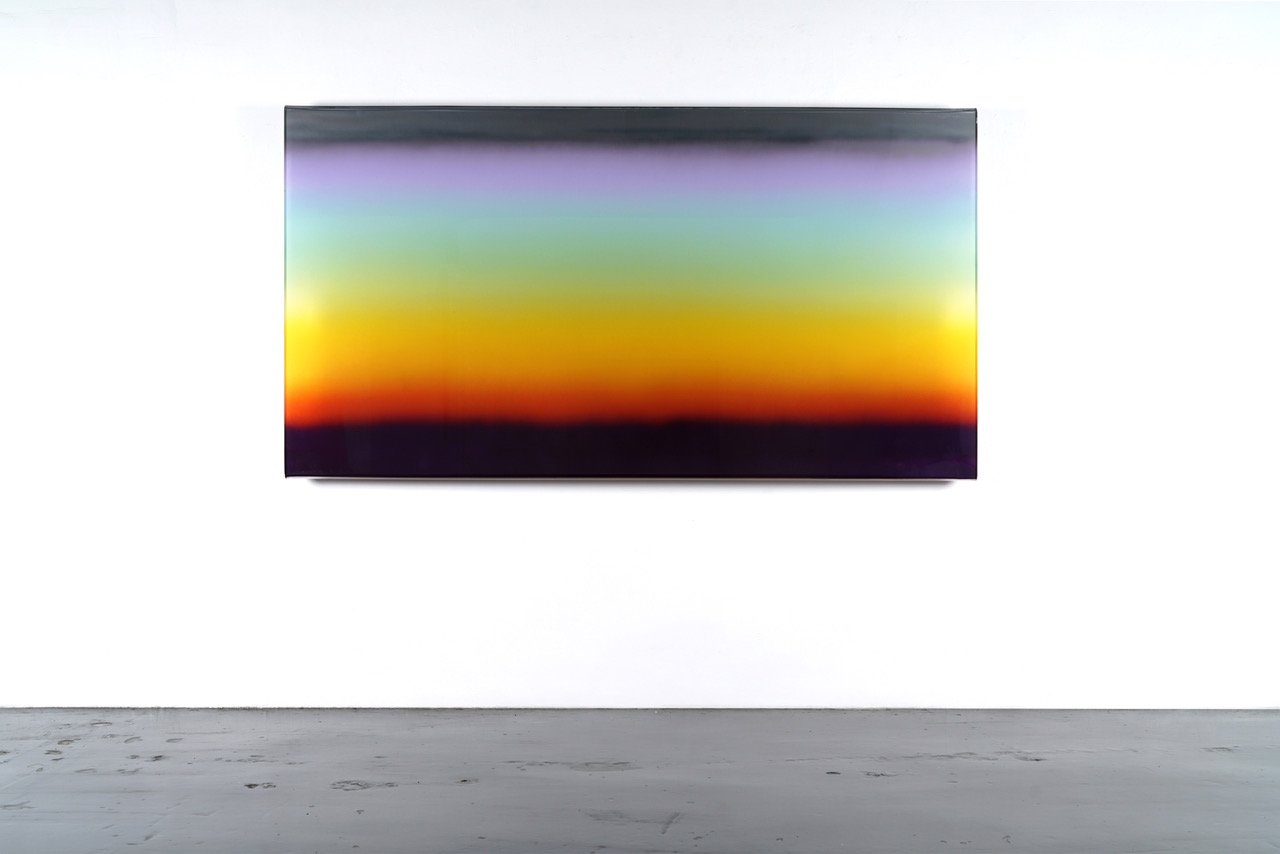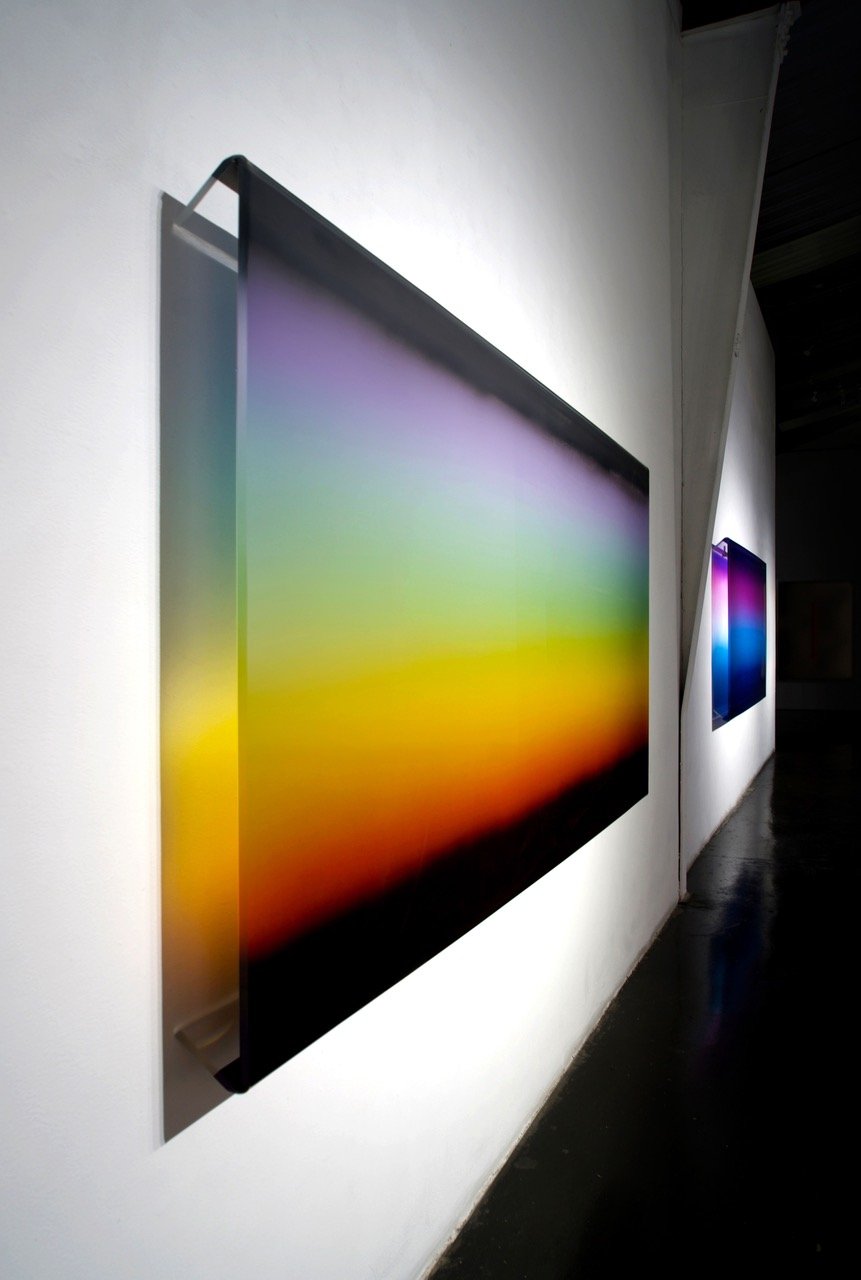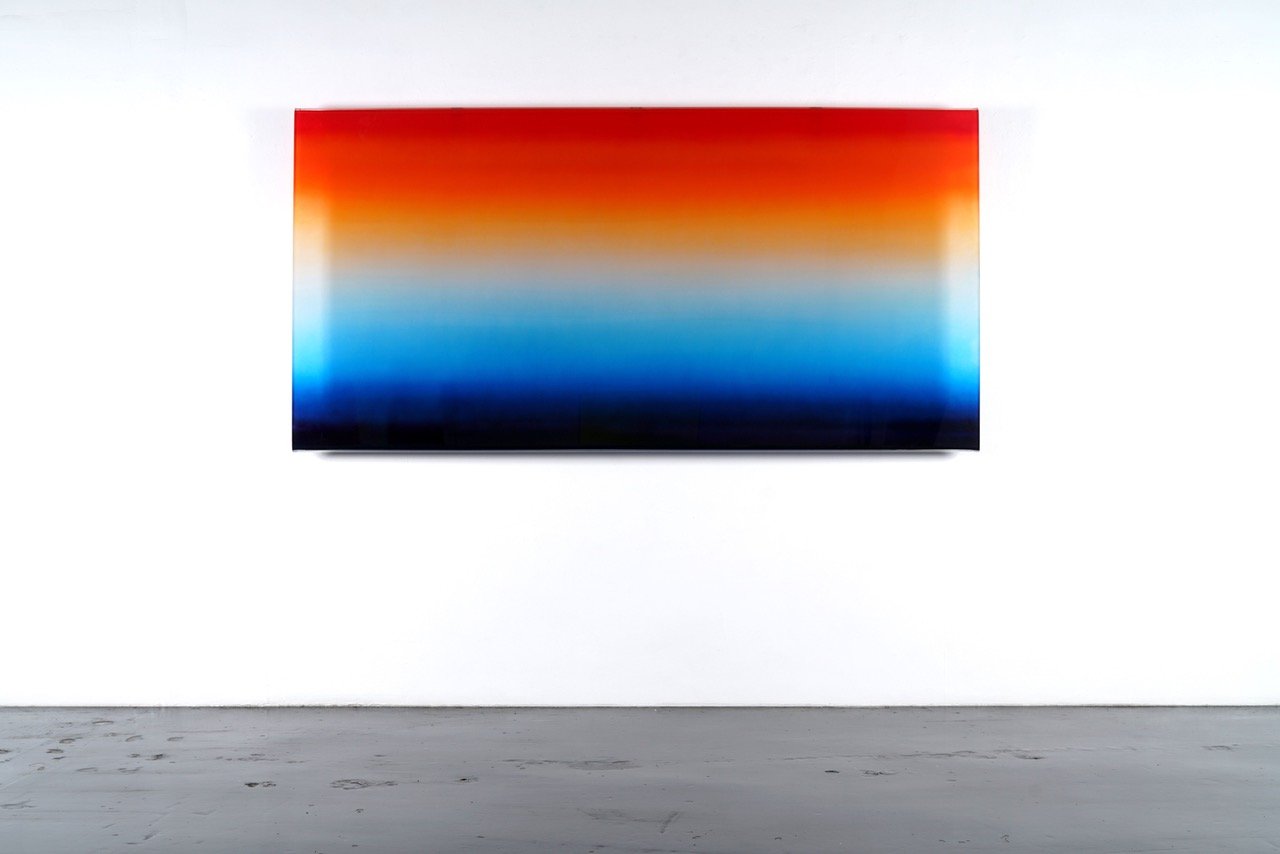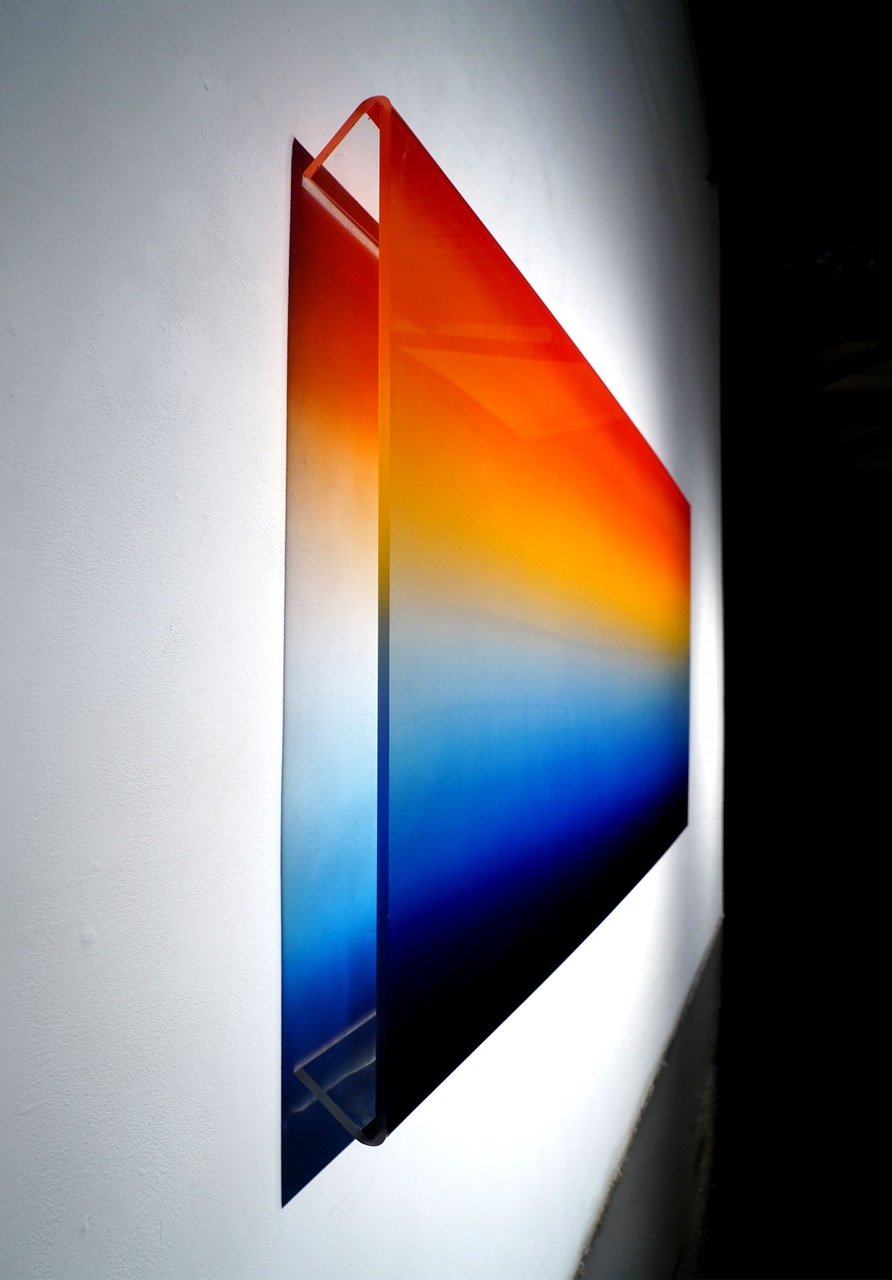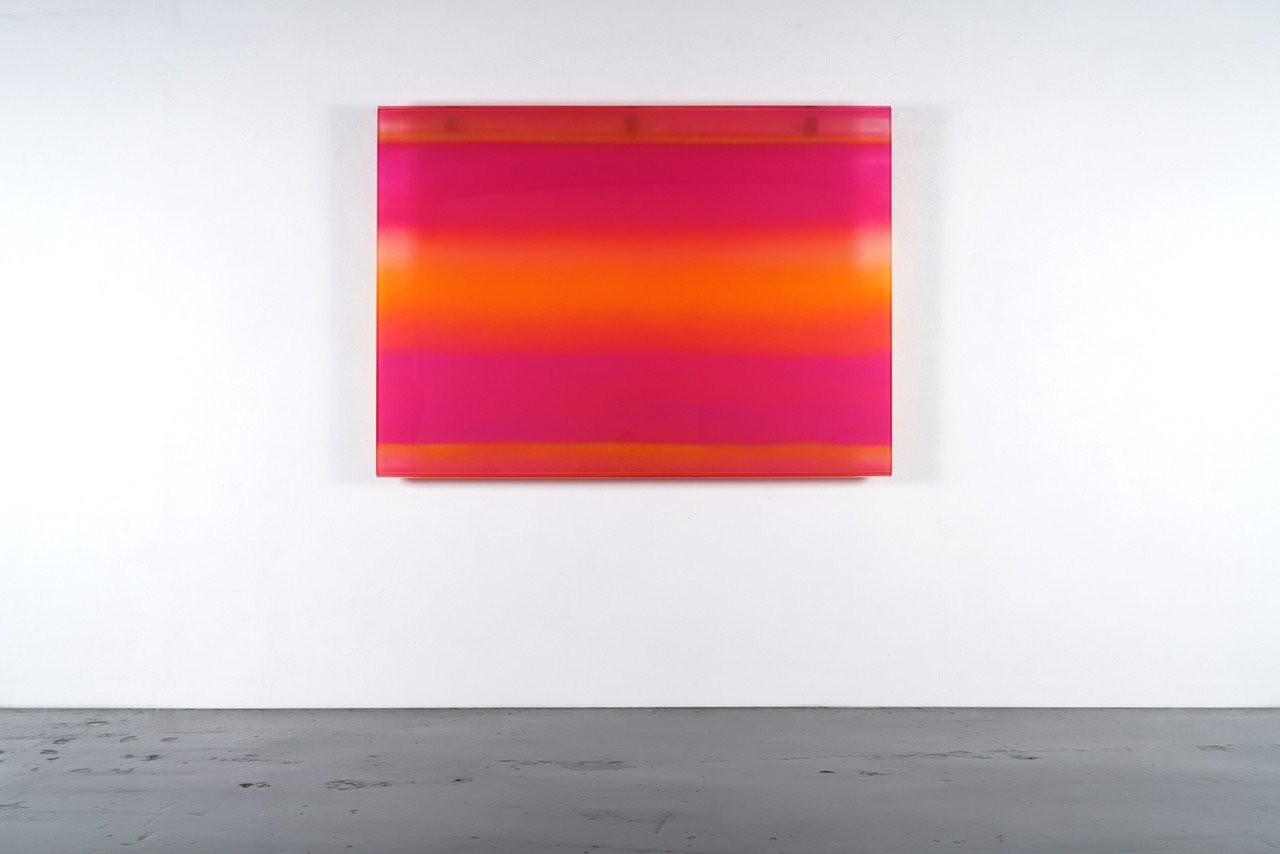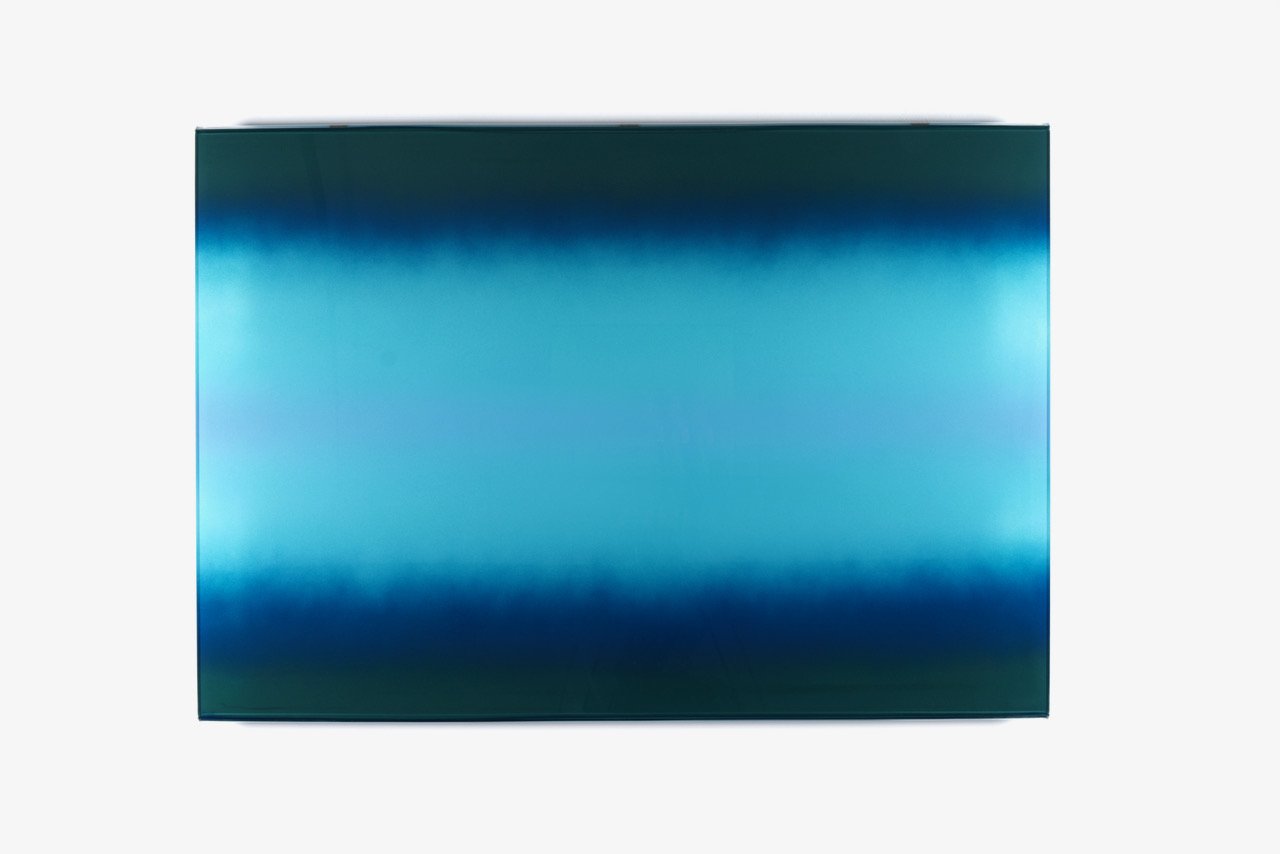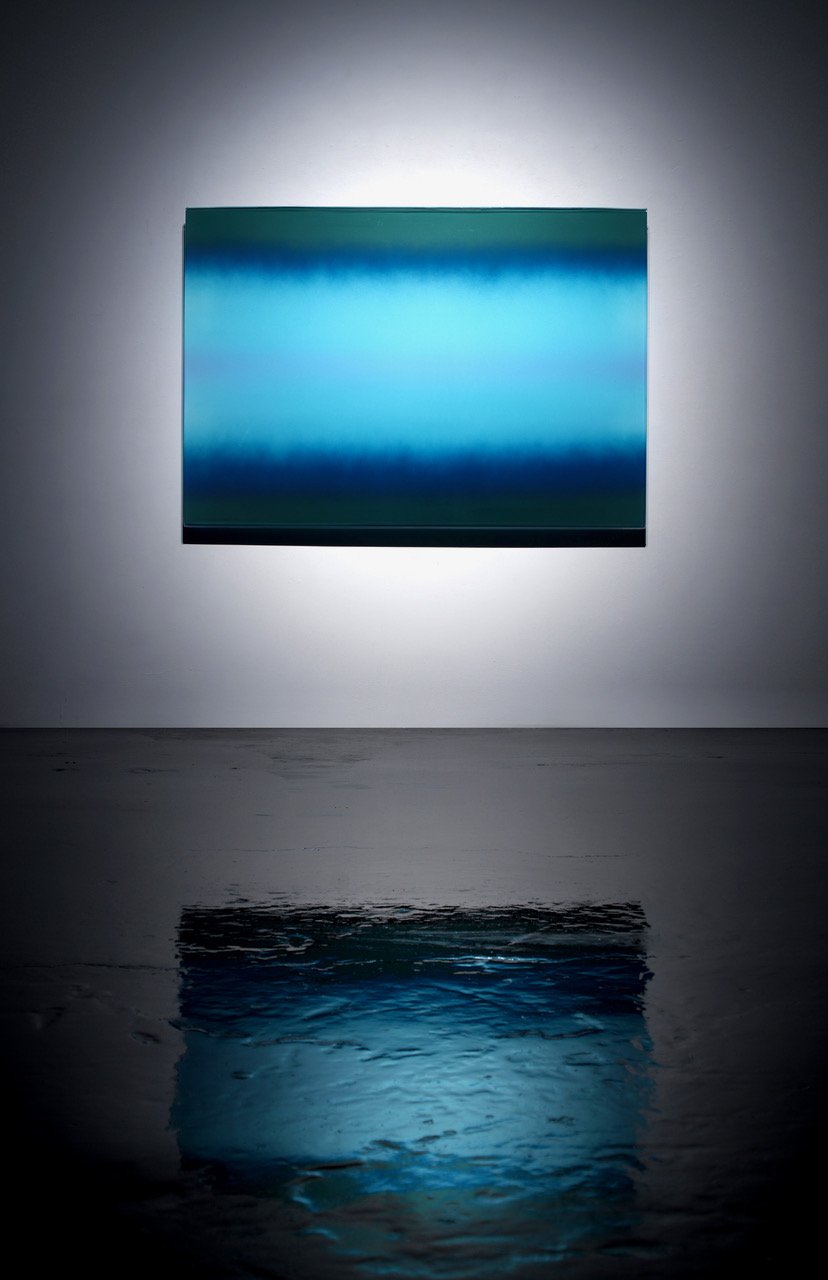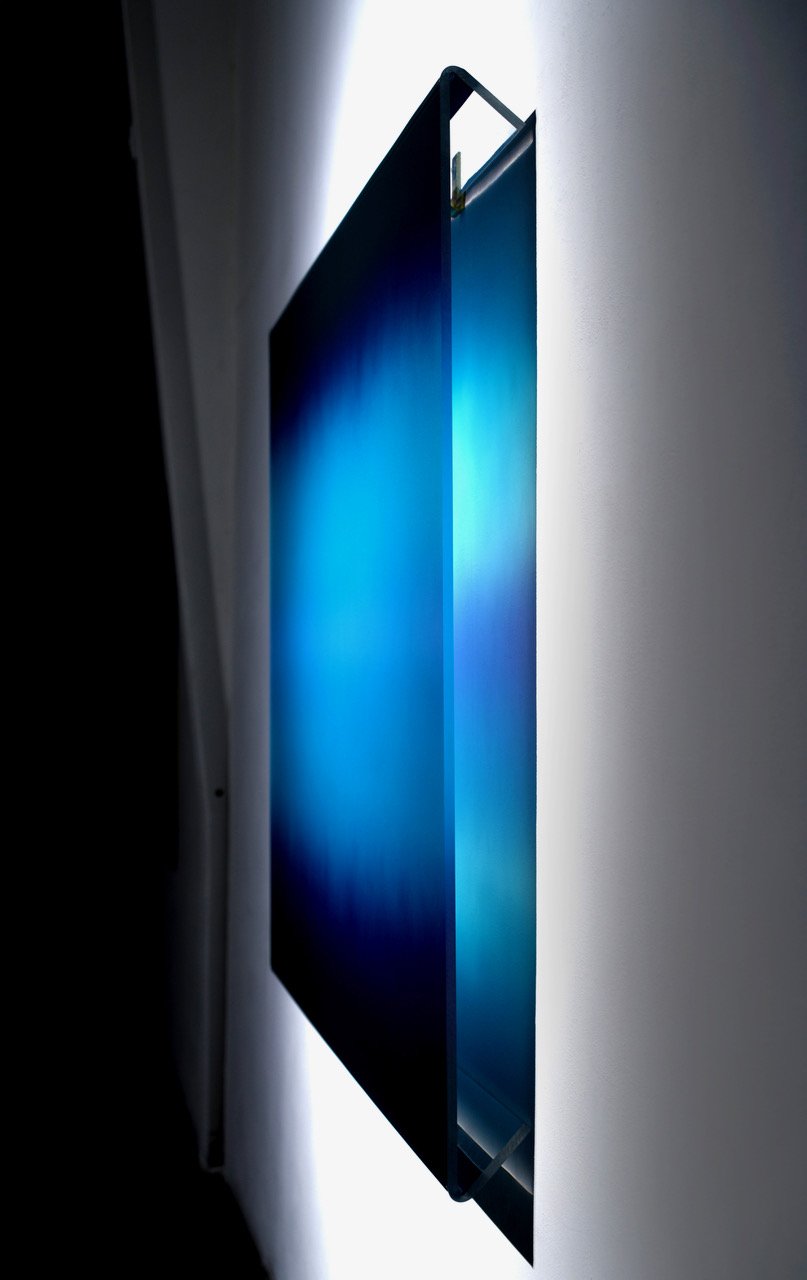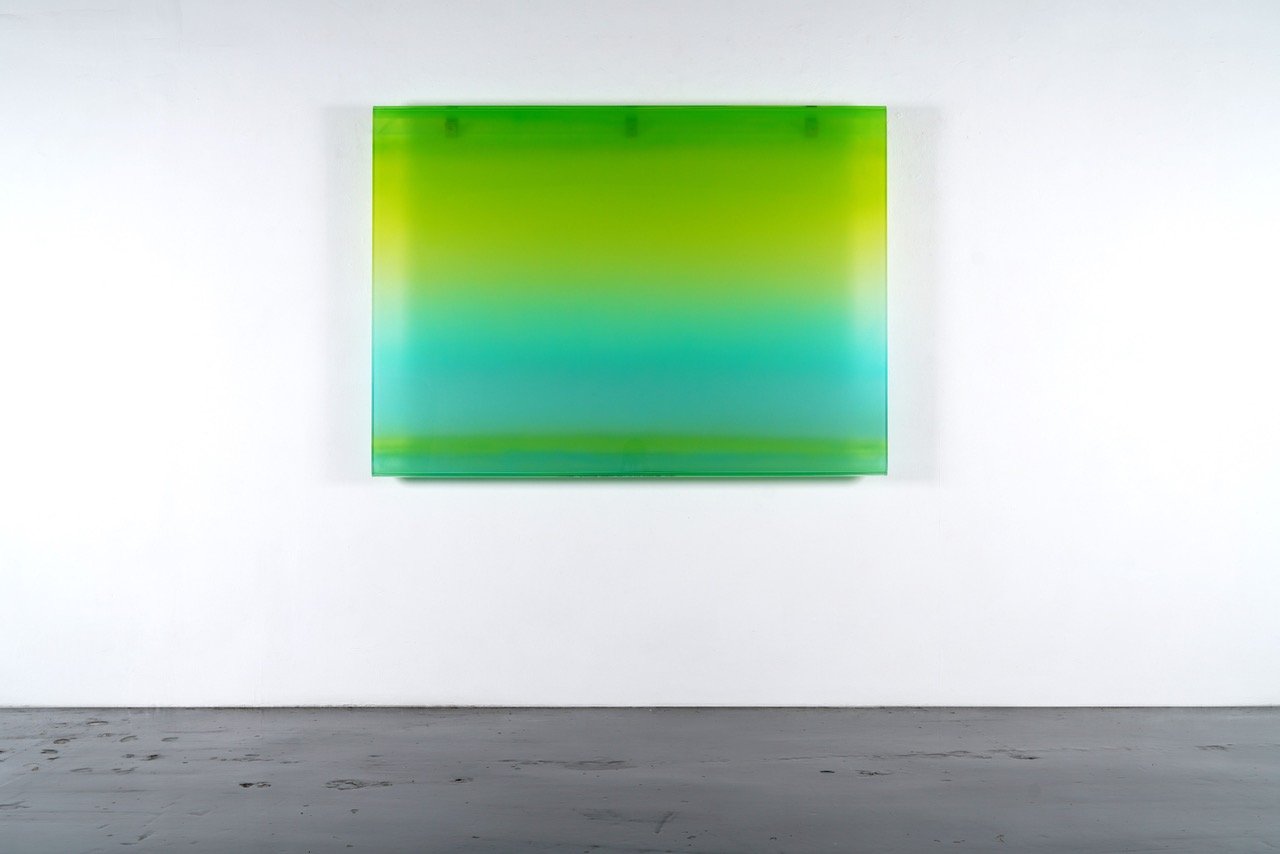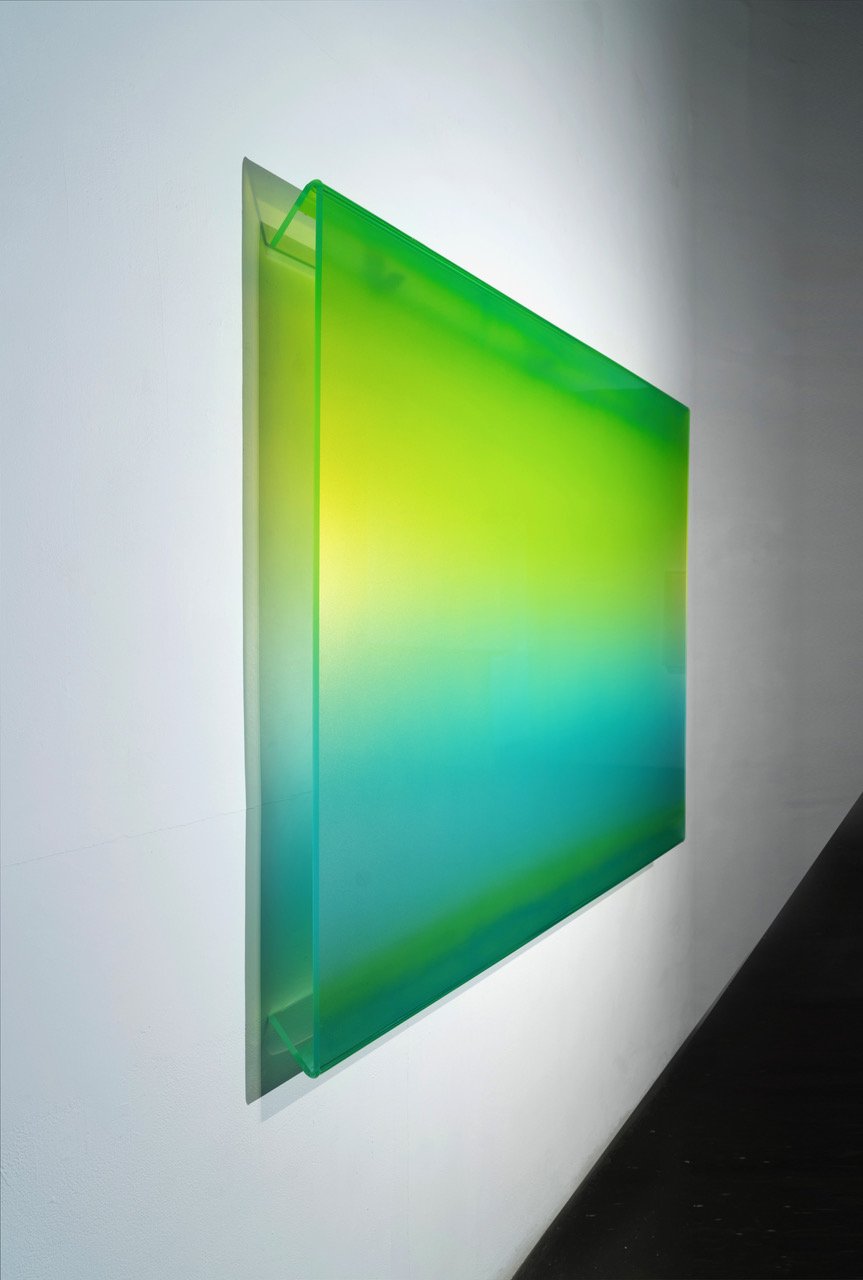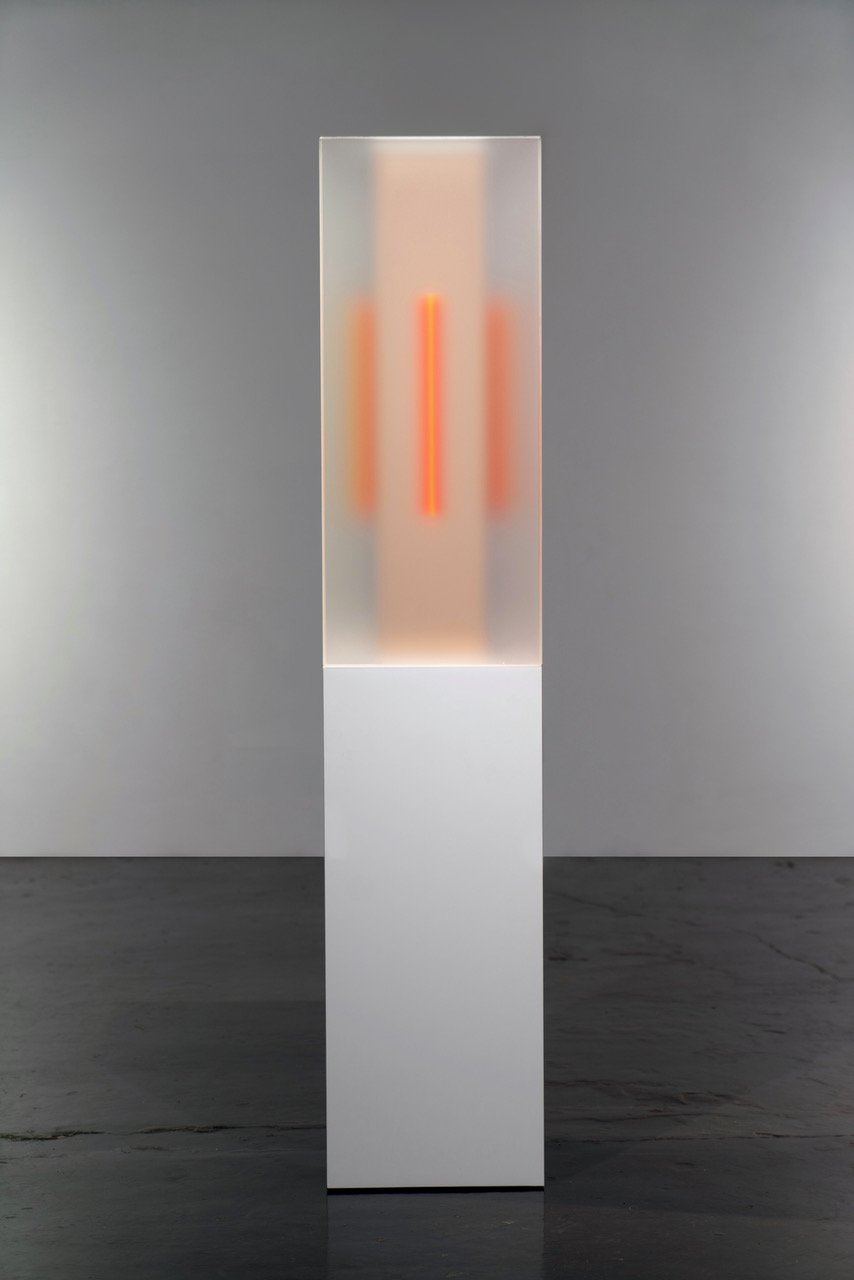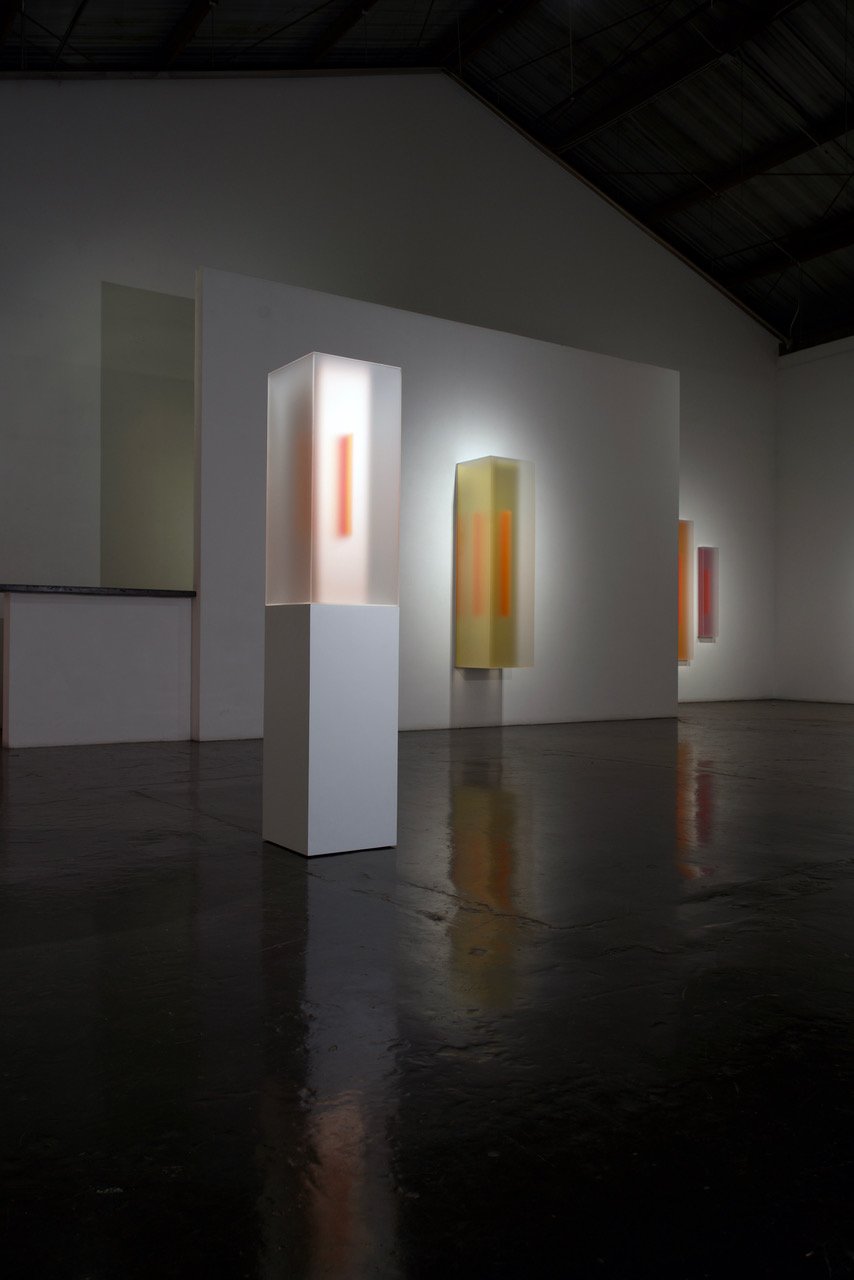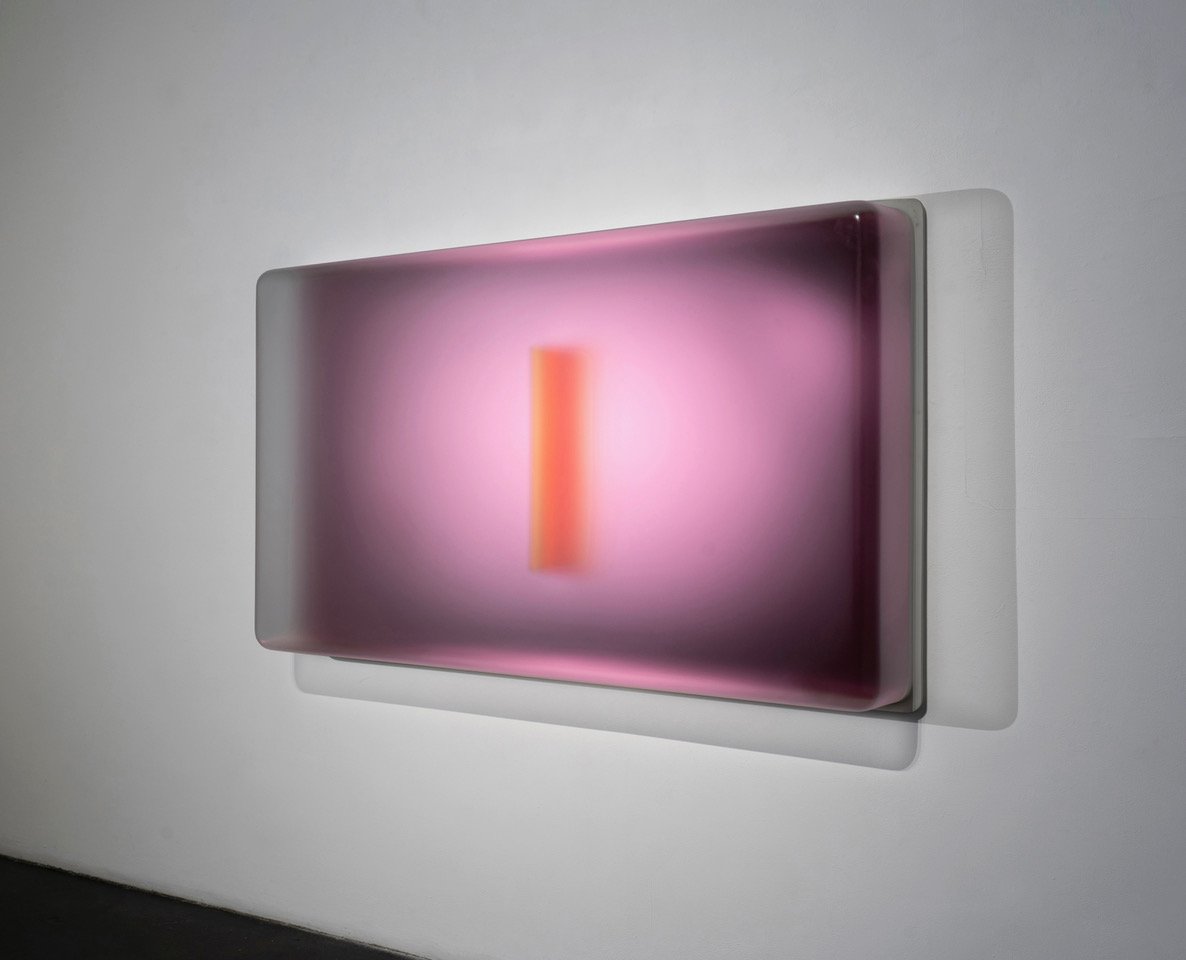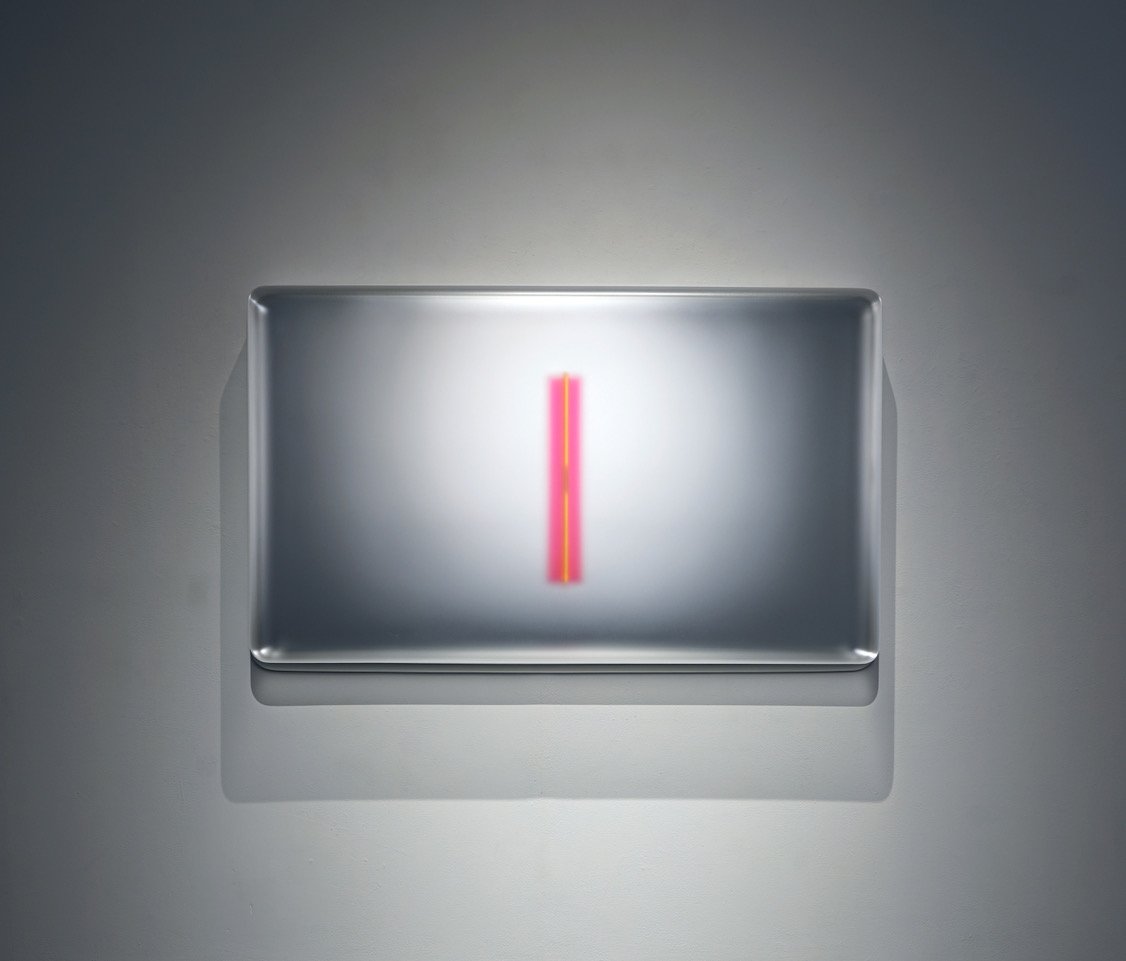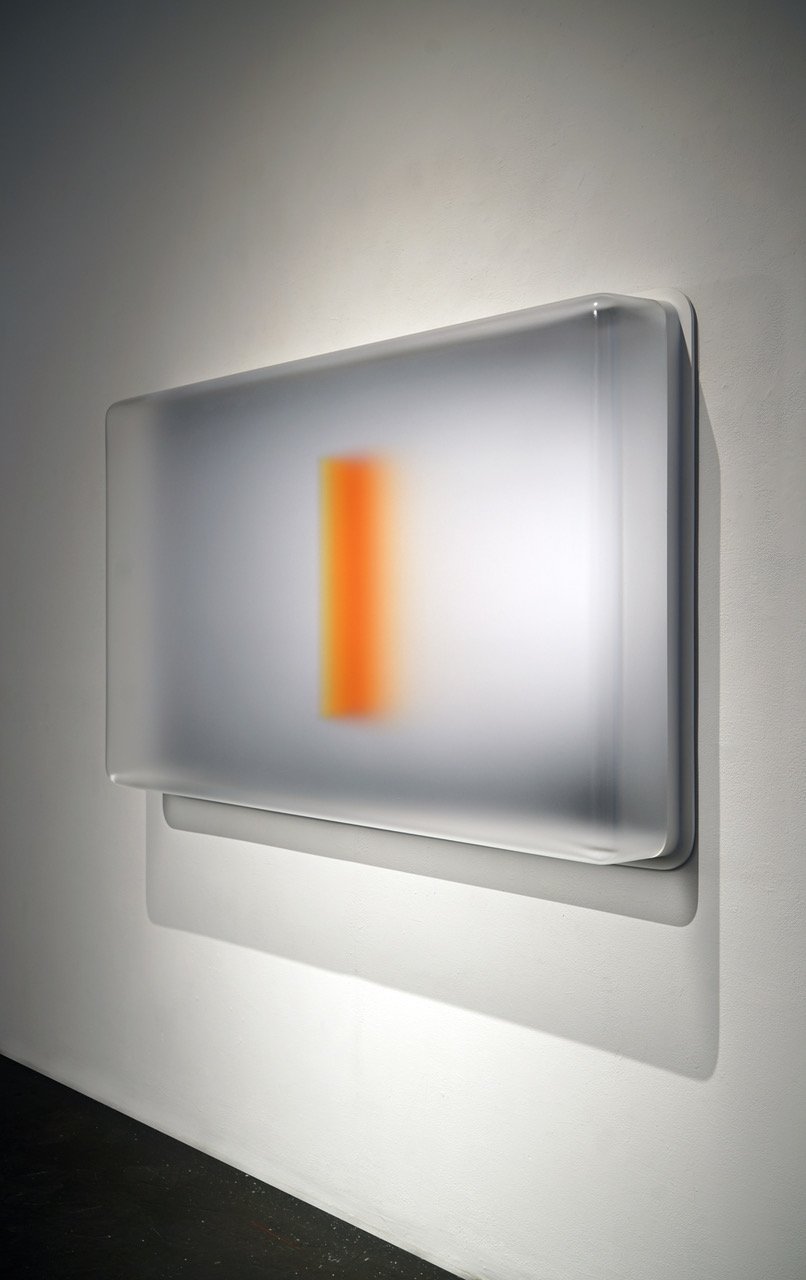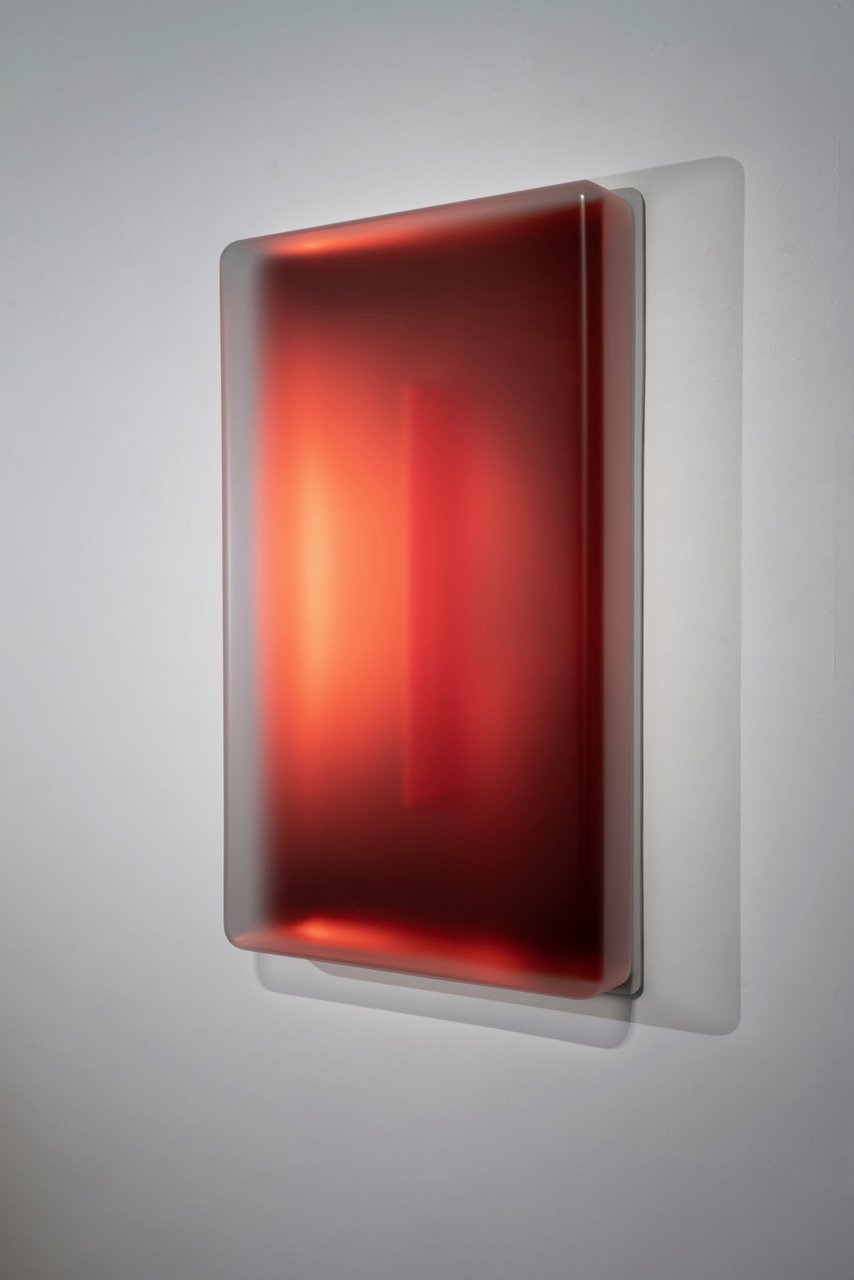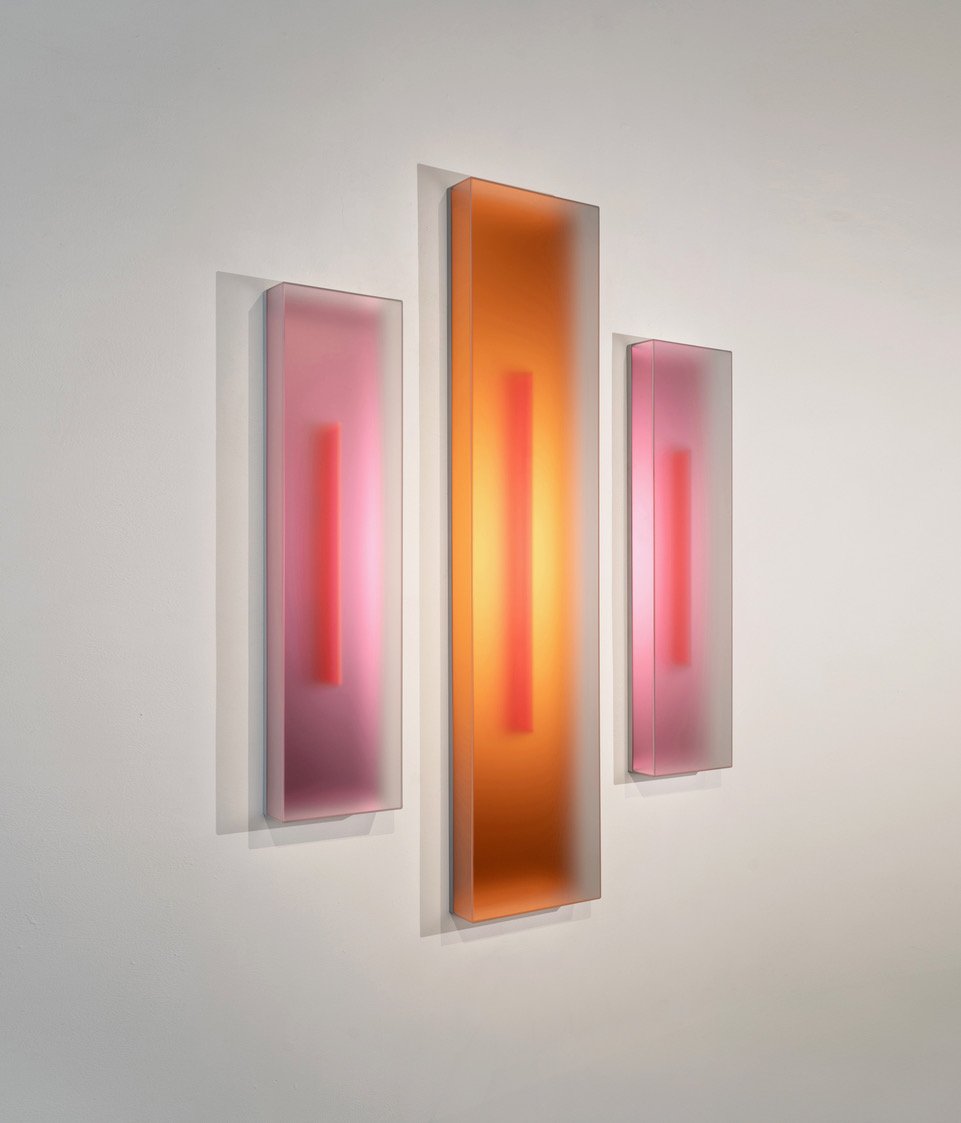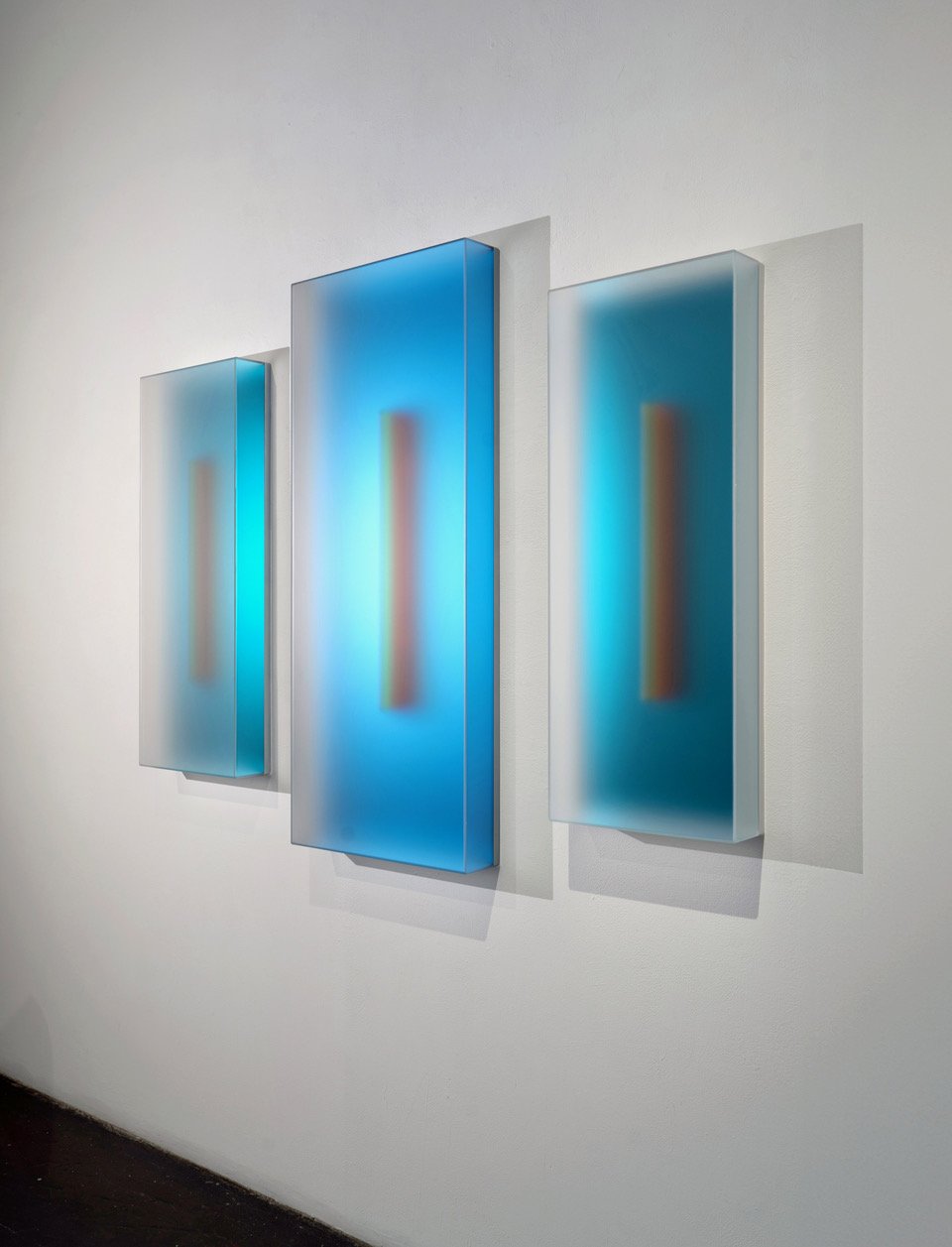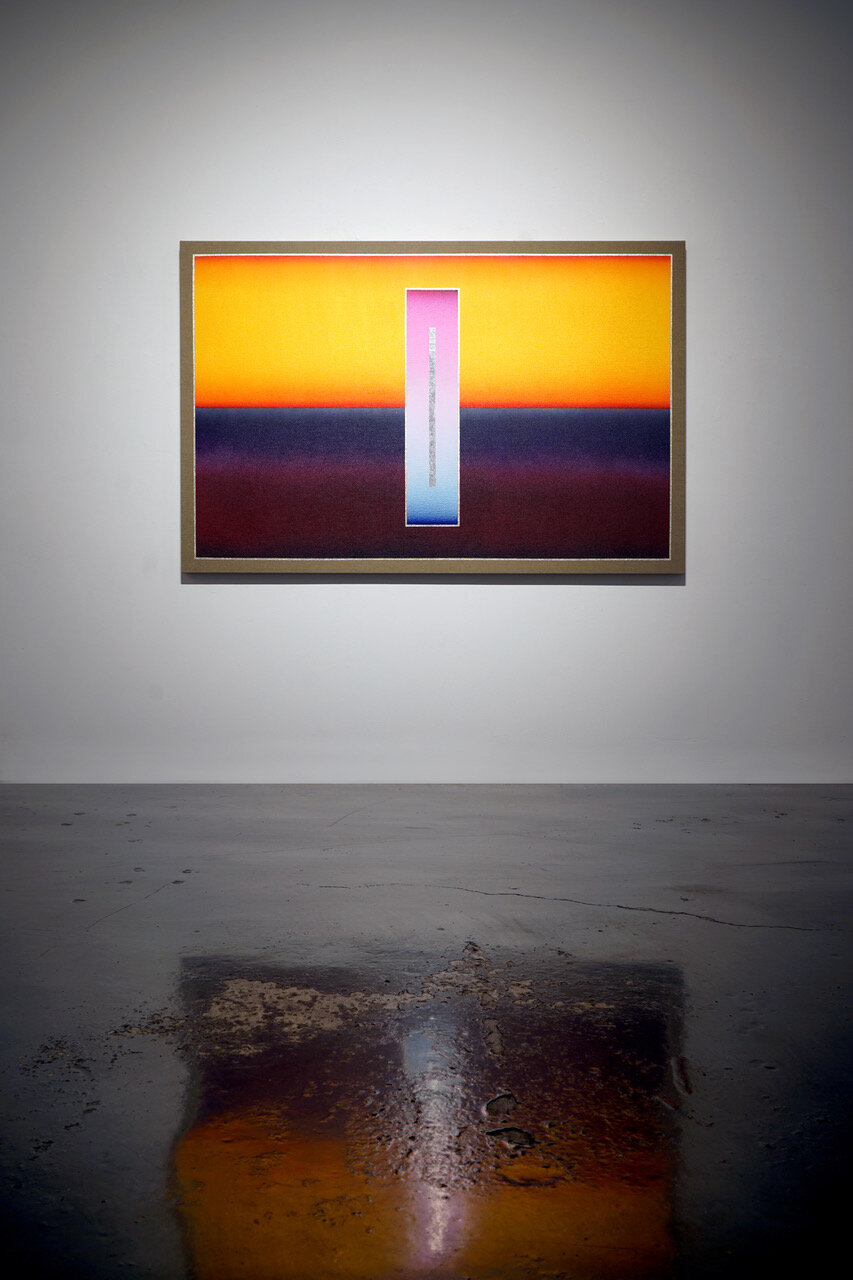CASPER BRINDLE

Casper Brindle is a Los Angeles based artist, renowned for his uniquely luminescent, ever evolving body of work. The work ranges from painting to sculpture, and exemplifies Brindle’s restless experimentation and evolving modes of expression. The works are poetic, sensual and spatially dynamic. Utilizing automotive paints and pigmented acrylic, Brindle has created works that reflect and diffuse light in ways that are nuanced and engaging.
Casper Brindle is at the dynamic leading edge of a dialogue, between artwork and viewer, that began in Southern California in the late 60s and early 70s and became known as Light & Space. The shift that began it all was as subtle as it was profound. The idea and purpose of the artwork shifted; from object to catalyst; from looking “at" the artwork to our experience of “perceiving” the artwork. Artists like Robert Irwin, James Turrell, Helen Pashgian, Fred Eversley, and many others, began to explore this notion of how their work could heighten one’s experience and perception. For Casper Brindle, that initial sensibility has been embraced with an adventurous spirit, leading in boldly new and exciting directions.
Born in Toronto in 1968, Brindle’s family relocated to Los Angeles in 1974 from the United Kingdom. By Brindle's early twenties, he moved to Venice and became enthralled with the burgeoning art scene there, where many of LA’s cutting-edge artists had studios. It was there that Brindle became immersed in the ideas of Light & Space, with which he has worked ever since.
Through subtle manipulations of materials to alternately absorb and refract light, Brindle has become a key figure in contemporary art. His work has been reviewed by noted art critics and curators, has been exhibited internationally, and was recently the subject of an extensive solo exhibition at the Luckman Gallery Museum at Cal State LA. Casper Brindle’s work is included in many prominent public and private collections, and is in the permanent collections of the Frederick R. Weisman Museum, Laguna Art Museum, the Morningside College Collection in Sioux City, IA, and the Lancaster Museum of Art and History.
EXHIBITIONS
NUMINA
LIGHT | GLYPHS
CrossCurrents
All Together Now
Casper Brindle: A Selection of Unique Works on Paper
Casper Brindle: Recent Works
DEEP WATER
Aura & Strata
CHROMA
Recent Works
MEDIA
INCONVERSATION: Casper Brindle
AUTRE MAGAZINE
ARGONAUT NEWS
ANGELENO MAGAZINE
ART NOW LA
ART DAILY
MINNESOTA STREET PROJECT
ARTLAND
VISUAL ART SOURCE
WHITE HOT MAGAZINE
WHITE HOT MAGAZINE
LIQUID SALT MAGAZINE
SELECTED WORKS
